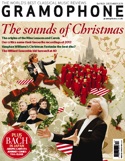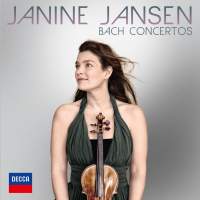Texte paru dans: / Appeared in:
*

GRAMOPHONE (12 /2013)
Pour s'abonner /
Subscription information
Decca
DEC4785362

Code-barres / Barcode : 0028947853626
Reviewer: Jonathan
Freeman-Attwood
Jansen and friends include the
unusual Bach ‘double’
For some, a disc of Bach’s Violin Concertos is incomplete without the
ubiquitous ‘Double’ in D minor – and on first impression, the choice of the
violin-and-oboe ‘Double’ makes a less obviously compatible companion. Yet
this is a distinctive and personal celebration of Jansen’s highly inflected
playing in the company of friends (an ‘ad hoc’ band) and challenging the
status quo is all part of the picture: marrying these three concertos with
two relatively galant pieces from the set of six sonatas for violin and
obbligato harpsichord must be a first.
Most noticeable in the general concerto canvas is how Jansen’s quixotic, bold and spontaneous toying with Bach so often finds itself checked by her ‘friends’, whose detached, super-polite period-parody articulations are not dissimilar to Riccardo Chailly’s Baroque way with modern instruments. Maybe a new Decca house style is emerging here?
If this unyieldingly pesky and contained accompaniment represents something of a minor irritation, Jansen transcends a good deal through infectious musical curiosity, spinning the lines with irradiating glee in the last movements of both violin concertos. The dynamic contrasts of the E major (BWV1042) and the swagger in the A minor (BWV1041) make for thrilling experiences and, equally, she brings a rare blend of intensity and stillness to the slow movement of the former.
More tactile is
the double concerto, where warmth emanates from Ramón Ortega Quero’s oboe, if
not always settled intonation. The harpsichord, played by Jansen’s father in the
two sonatas, constitutes a solid support role rather than engaging in the active
complicity which these pieces really deserve. Jansen’s beguiling sound and
fluidity of phraseology is elegantly exhibited throughout (notably in the Adagio
ma non tanto of BWV1016). One just wishes that these fellow musicians could rise
a little higher to meet Jansen’s questing musical enterprise and imagination.
Cliquez l'un ou l'autre
bouton pour découvrir bien d'autres critiques de CD
Click either button for many other reviews


